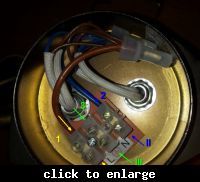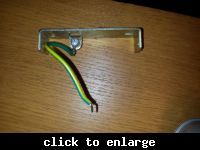Hello,
three cables come out of the ceiling, a two-button wall switch.
I checked with a test tube, one cable is without voltage, two with voltage (in one the light of the test tube shines brighter in the other, and vice versa, depending on how the wall switch switches).

in addition to the chandelier set, I got a grounding element that is screwed to the chandelier

The question of how to connect the cables?
1. power supply from the ceiling under I and II - no matter what configuration and grounding under III or 3? (The 3 in the cube has a metal rod connected to the chandelier housing)
2. wash the cables 1,2 and connect another cube to the power supply from the ceiling, and the green-yellow one (additional part of the chandelier) to the third one, and III with the one that has no tension from the ceiling?
three cables come out of the ceiling, a two-button wall switch.
I checked with a test tube, one cable is without voltage, two with voltage (in one the light of the test tube shines brighter in the other, and vice versa, depending on how the wall switch switches).

in addition to the chandelier set, I got a grounding element that is screwed to the chandelier

The question of how to connect the cables?
1. power supply from the ceiling under I and II - no matter what configuration and grounding under III or 3? (The 3 in the cube has a metal rod connected to the chandelier housing)
2. wash the cables 1,2 and connect another cube to the power supply from the ceiling, and the green-yellow one (additional part of the chandelier) to the third one, and III with the one that has no tension from the ceiling?


